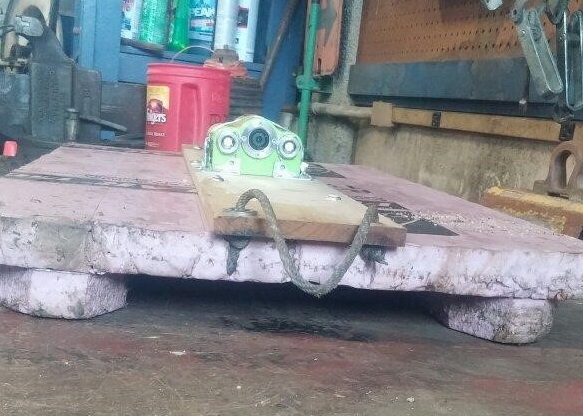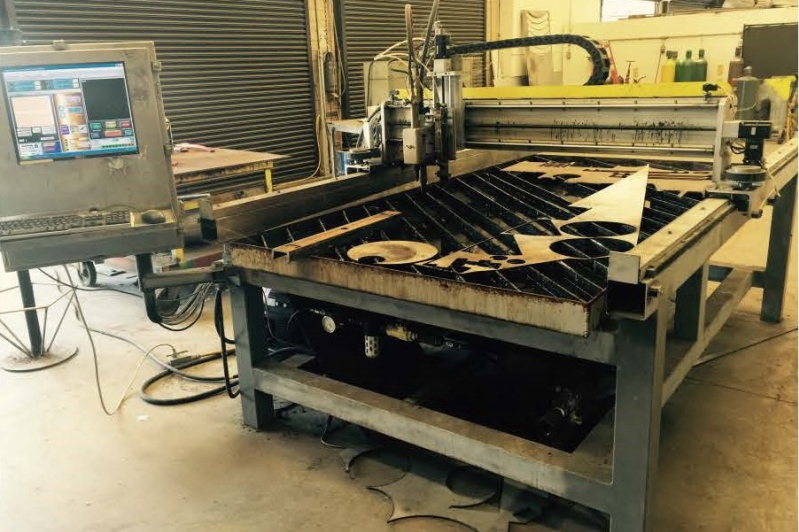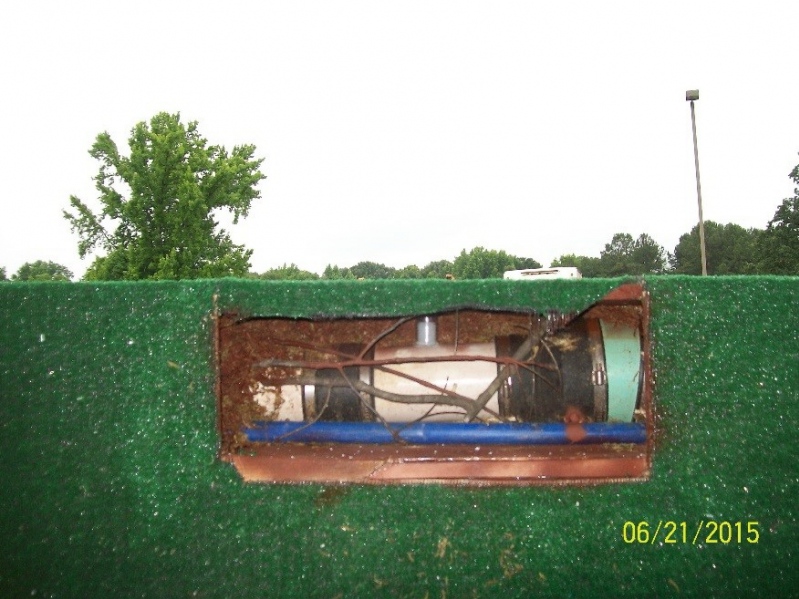National Ingenuity Contest Champs Stun Judges with Amazing Ideas

National Ingenuity Contest Champs Stun Judges with Amazing Ideas
By Steve Spicer, Managing Editor of Water Environment & Technology Magazine
Four inventors received awards from the 2015 Ingenuity Contest at WEFTEC® 2015 in Chicago. This marks the fourth year that the competition has recognized fixes that tackle a persistent problem with nothing more than the materials at hand and a hearty dose of ingenuity.
Captains of the Inspection Squadron
When the City of Casper, Wyo., worried about the condition of the pipes within its water resource recovery facility, the wastewater crew found a floating solution. The crew — Lane Christensen, David Ferguson, Matt Wilhelms, Jared Winzenried, Brody Allen, and James Soller — pieced together some foam-board, a piece of wood, rope, and fasteners to create a raft for its collection system camera. The crew nicknamed the contraption The U.S.S. WWTP.
The crew needed a way to guide the camera through the pipe safely and ensure that it could be recovered at the downstream manhole. To accomplish this, the crew first dropped an inflatable ball attached to several hundred feet of twine into the pipe and tied the twine to the upstream manhole. When the ball made its way to the downstream manhole, the crew retrieved it with a hook. This left a long stretch of twine running the length of the pipe between the manholes.
Next, they tied the U.S.S WWTP to the twine at the upstream manhole, gently lowered it into the pipe, and then pulled at a steady rate from the downstream manhole. Upon arrival at the downstream manhole, the U.S.S. WWTP was removed using the long-handled hook.
 |
| The U.S.S. WWTP sits ready to sail through the facility’s pipes. Credit: City of Casper, Wyo |
The video collected from the camera was invaluable. It showed areas of severe corrosion and pipe collapse that must be repaired in the near future.
Valedictorians of the School of Hard Knocks
During a March 2011 thunderstorm, operators at the Hill Canyon Wastewater Treatment Plant (Thousand Oaks, Calif.) noticed the pipe from secondary clarifiers to emergency retention basins was not flowing fully. After the storm, the crew — Mark Capron, Mike Mantor, and Robert Richardson — determined that nothing but air was blocking the pipe, but it remained less than half full.
They realized that the high point of the base of the 875-mm (36-in.) diameter pipeline was too high. This configuration led to empty space within the headspace of the pipe.
Restoring the pipe’s full 189-m3/d (50-mgd) flow required getting the air out at the high point. Instead of a major construction project to lower the high point of pipe to prevent the air blockage, the crew installed a $500 vacuum pump to the exiting air release valve.
When the pipe is full of air, one vacuum pump requires a full day to remove all the air. After the air is removed, the pumps run less than 100 hours per year in sub-second bursts. The crew also decided to leave the air release valve itself in place to prevent the vacuum pump from pulling in water. With the air removed, the line regained its full capacity.
Master of the Machines
Vikas Bhaskaran, senior skilled trade technician at the Village Creek Water Reclamation Facility (Fort Worth, Texas), builds tools to aid his fellow mechanics. He created a plasma and oxy-acetylene cutting machine using parts salvaged from old traveling bridge filters. The machine cuts metal precisely to enable operators to fabricate metal pieces for custom repairs. Bhaskaran also created a ratchet to help remove and attach the stator from a screw pumps more safely. The ratchet enables a single person to do a task that, before, took five people.
 |
| Building a precision cutting tool from salvaged parts enables the Village Creek Water Reclamation Facility (Fort Worth, Texas) to make the custom pieces it needs for repairs. Credit: Village Creek Water Reclamation Facility |
Dean of Public Education
The Jacksonville (Ark.) Wastewater Utility wanted to educate customers about how line inspections work. To achieve this, operators, led by Walton J. Summers II, built a display that includes a replica manhole, lateral, and cleanout cap. Part of the display gives an underground view of the lateral, which is cracked and wrapped with tree roots. Operators can show residents how smoke added to the manhole seeps up out of the grass — green outdoor carpet — and signals the need to televise the line to produce a defect drawing.
 |
| Jacksonville’s (Ark.) smoke testing display helps customers understand the inspection process. Credit: Jacksonville Wastewater Utility |
Share your ingenious fixes
The WEFTEC Ingenuity Contest will return in 2016 to honor more smart fixes and quick repairs. So, throw together a roughly 1-page description of the problem you faced and the fix you found. If your invention or idea can be photographed, snap a picture.
The submission window is open now until May 26, 2016. See the full entry details at www.weftec.org/ingenuity. Author Steve Spicer can be reached at SSpicer@wef.org
 |
“The information provided in this article is designed to be educational. It is not intended to provide any type of professional advice including without limitation legal, accounting, or engineering. Your use of the information provided here is voluntary and should be based on your own evaluation and analysis of its accuracy, appropriateness for your use, and any potential risks of using the information. The Water Environment Federation (WEF), author and the publisher of this article assume no liability of any kind with respect to the accuracy or completeness of the contents and specifically disclaim any implied warranties of merchantability or fitness of use for a particular purpose. Any references included are provided for informational purposes only and do not constitute endorsement of any sources.” |





